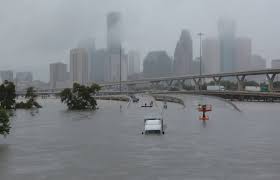Blogger: Lee M. Epstein
Beyond the personal toll extracted by Hurricanes Harvey and Irma, the property and business losses are projected to be among the greatest caused by a natural disaster. As the recovery efforts continue in earnest, the following Checklist is offered to assist those who have suffered a loss and are planning to submit an insurance claim for any property loss and business interruption suffered.
□ Restore service to any property protection systems that have been damaged, such as
sprinklers and alarms
□ If property protection cannot be restored, post a watch
□ Notify all insurance companies whose policies may be implicated
□ Consider whether notice should be given to excess insurance companies or to
insurance companies whose policies have expired
□ Prepare a preliminary report describing:
□ The type of loss
□ The date and time of the loss
□ The location of the loss
□ A contact person at the company
□ The property involved, including: buildings, equipment and stock
□ Determine if:
□ The property is protected from further damage
□ Any buildings require temporary enclosures
□ Any utility lines have been damaged and require repairs
□ Identify and separate damaged and undamaged property
□ Commence salvage operations
□ Determine whether:
□ Production can be restored at the damaged facilities
□ Damaged equipment can be repaired
□ Substitute facilities and equipment are available and necessary
□ Lost production can be made up through inventory, overtime, or other
suppliers
□ Formulate a plan with the insurance company’s input for making repairs,
securing substitute facilities and equipment and undertaking other loss
mitigation efforts
□ Set up accounting procedures to track:
□ Property Damage
□ Create separate accounts for all loss-related expenses
□ Implement procedures for collecting and maintaining all loss-related
documentation in accordance with insurance policy terms, including
invoices, contracts and manpower hours
□ Inventory damaged and undamaged goods
□ Business Interruption
□ Determine the “period of interruption”
□ Determine the quantity of lost production as reflected in inventory
records, production records and sales records. Compute what the business
would have normally produced, had there been no loss, then see how many
units were actually produced. The difference is the gross lost production.
□ Deduct any sales or production that can be continued or made up through
the use of existing inventory, the utilization of other plants, the utilization
of overtime hours or other loss mitigation efforts. The difference is the
net lost production.
□ Multiply the net lost production by the marginal value of a single
production unit.
□ Add back the extra costs associated with replenishing inventory and loss
mitigation efforts.
□ Prepare and submit claim
□ Summarize
□ Date, location and type of loss
□ Amount claimed
□ Break down the amount claimed
□ Property damage
□ Real property
□ Equipment
□ Stock and supplies
□ Demolition and debris removal
□ Business Interruption
□ Interruption Period
□ Sales value of lost production
□ Expenses incurred to reduce the loss
□ Attach supporting documentation for each element of the property damage and
business interruption
□ Press for written extensions of time to submit claim and to file suit if necessary
□ Seek prompt payment of claim by insurance company
□ If a dispute over a claim arises, determine
□ Whether appraisal is appropriate or beneficial
□ Whether litigation will expedite payment of claim
For more information, please contact Lee Epstein, Chair of the Insurance Counseling and Recovery Department at Flaster Greenberg PC.

